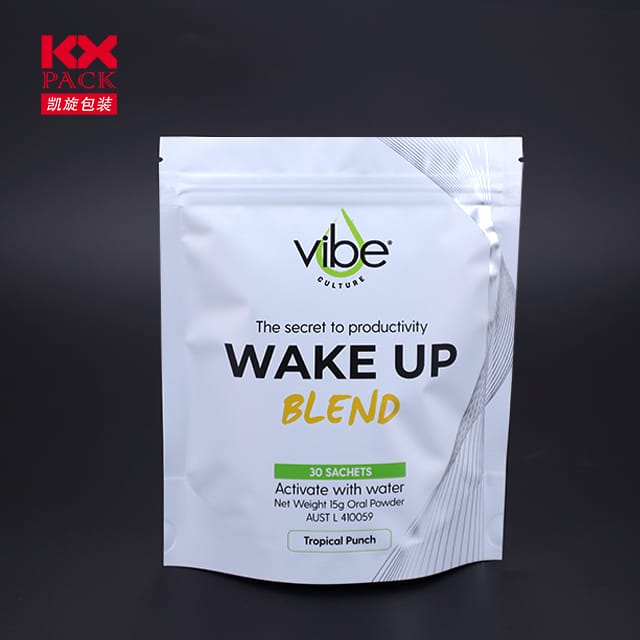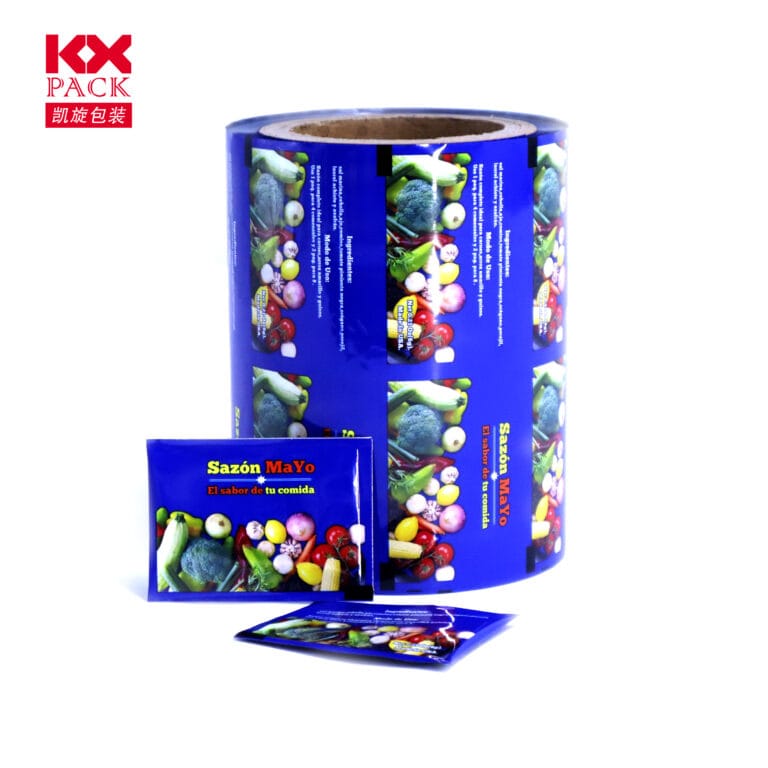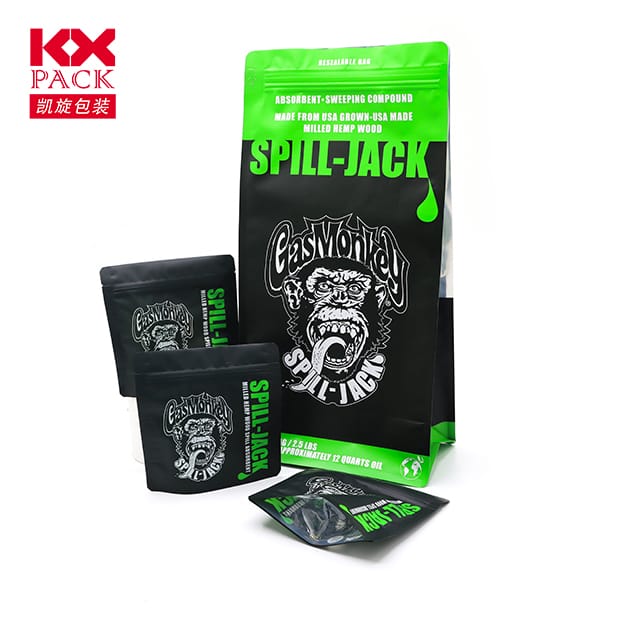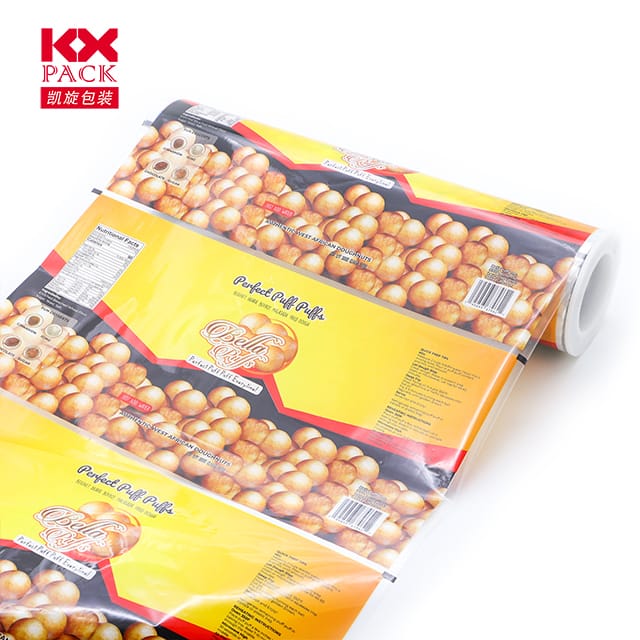სიახლის რევოლუცია: კვების ფილმის შეფუთვის მომავალი 2025
კვების ფილმის შეფუთვა
In an era where sustainability meets innovation, კვების ფილმის შეფუთვა გადის ტრანსფორმაციულ ცვლას. აღარ არის მხოლოდ ბარიერი დაბინძურების წინააღმდეგ, თანამედროვე კვების ფილმები ინჟინერირებულია შენახვის ვადაზე, ნარჩენების შემცირება, და კიდევ აძლიერებს კვების გამოცდილებას - ყველაფერი, ხოლო გარემოზე ზემოქმედების მინიმუმამდე შემცირება. Let’s explore the cutting-edge trends and technologies reshaping this essential industry.
1. ჭკვიანი შეფუთვა: The Next Frontier in Food Safety
Imagine a კვების ფილმის შეფუთვა that changes color when food spoils or releases antioxidants to slow degradation. Welcome to the age of smart food packaging!
- Time-Temperature Indicators (TTIs): These labels react to temperature fluctuations, alerting consumers if perishables like meat or dairy have been exposed to unsafe conditions.
- Freshness Sensors: Embedded sensors detect gases (მაგ., ammonia from spoiled fish) and trigger visual changes, ensuring food safety before consumption.
- აქტიური შეფუთვა: კვების ფილმის შეფუთვა infused with natural compounds like rosemary extract or vitamin C actively combat oxidation, keeping fruits and vegetables crisp longer.
მაგალითი: კომპანიებს მოსწონთMitsubishi Gas Chemical დაInsignia Technologies are pioneering these solutions, with products already in use for premium seafood and meat packaging.
2. Sustainability Takes Center Stage
With global plastic waste soaring, the demand for eco-friendly alternatives has never been higher. აი, როგორ რეაგირებს ინდუსტრია:
- ბიოდეგრადირებადი ფილმები: Made from plant-based materials like cassava starch, ცელულოზა, or algae, these კვების ფილმის შეფუთვაs decompose naturally within months, unlike traditional plastics.
- საკვები შეფუთვა: ინოვაციები მოსწონს seaweed-based wrappers (used by brands like ბლოკნოტი) ან fruit peel-inspired films eliminate waste entirely.
- რეციკლირებული შინაარსი: Brands are incorporating post-consumer recycled (PCR) plastics into films, ქალწულ მასალებზე დამოკიდებულების შემცირება.
Stat Alert: The global biodegradable food packaging market is projected to grow at12.8% კაგრისი through 2030, driven by consumer demand for greener options.
3. Advanced Barrier Technologies: Keeping Food Fresher, Longer
Modern კვების ფილმის შეფუთვა are engineered to tackle specific challenges:
- ჟანგბადის scavengers: Films with built-in oxygen absorbers prevent oxidation, ideal for snacks, ყავა, and nuts.
- Moisture Control: Multi-layer films with hydrophobic coatings protect dry goods like cereals from humidity.
- UV Blocking: For light-sensitive products like beer or oils, films with UV inhibitors maintain quality during storage and transport.
საქმის შესწავლა: Amcor’s high-barrier laminates for cheese packaging reduce oxygen transmission by 99%, extending shelf life by up to 50%.
4. Customization for Every Need
From single-serve snacks to bulk industrial packaging, flexibility is key:
- Printable Films: High-resolution printing allows brands to create eye-catching designs while maintaining functionality.
- Resealable Features: Zippers or adhesive strips enhance convenience for consumers, reducing food waste from partially used products.
- Thermoformable Films: These adapt to irregular shapes, perfect for packaging fresh produce or ready-to-eat meals.
Trend Alert: The rise ofe-commerce grocery has spurred demand for puncture-resistant films that withstand shipping while keeping contents intact.
5. The Role of Nanotechnology
Nanomaterials are unlocking new possibilities:
- Nano-coatings: Ultra-thin layers improve barrier properties without adding bulk, making films lighter and more efficient.
- ანტიმიკრობული ფილმები: Silver or zinc oxide nanoparticles inhibit bacterial growth, extending the life of perishables like meat and bread.
Research Spotlight: ა 2024 study found that nano-silver-coated films reducedე. coli contamination in packaged lettuce by 99.9% over 14 დღეები.
გამოწვევები და წინ მიმავალი გზა
პროგრესის მიუხედავად, დაბრკოლებები რჩება:
- ღირებულება: Biodegradable materials are often pricier than conventional plastics, though economies of scale are narrowing the gap.
- სამომხმარებლო განათლება: Many remain unaware of recycling guidelines for compostable films, leading to contamination in waste streams.
- Regulatory Hurdles: Approvals for new materials vary by region, slowing global adoption.
საბოლოო აზრები
Food film packaging is no longer just about wrapping—it’s a dynamic field where science, მდგრადობა, and design converge. As brands prioritize circular economy principles and consumers demand transparency, the future of packaging looks brighter (and greener) than ever.
Ready to make a switch? Look for certifications likeკარგი კომპოსტი ანTÜV Austria when shopping for eco-friendly options, and support companies investing in innovation.
What’s your take on food packaging’s future? გაუზიარეთ თქვენი აზრები ქვემოთ! 🌱📦







